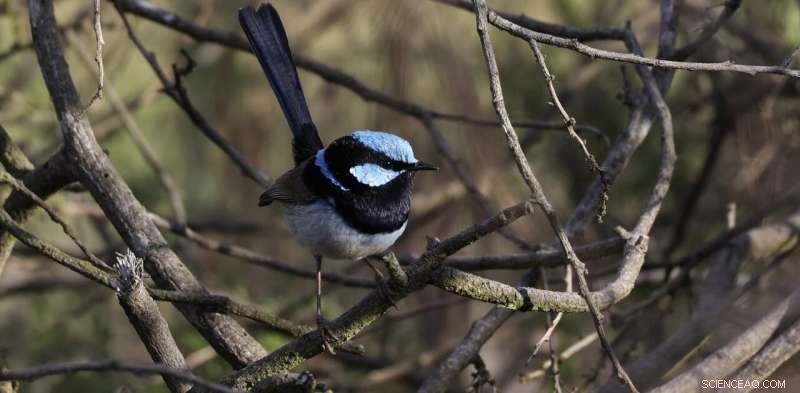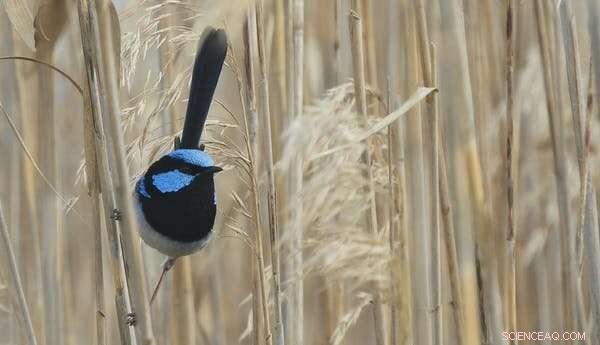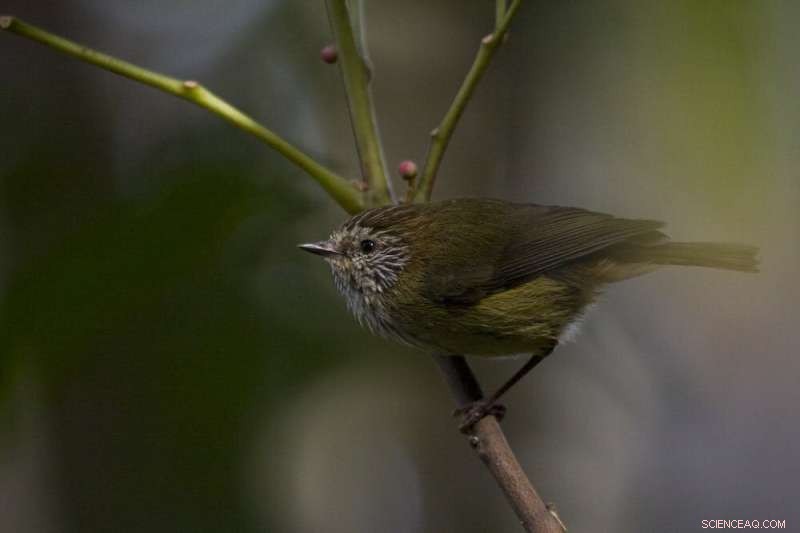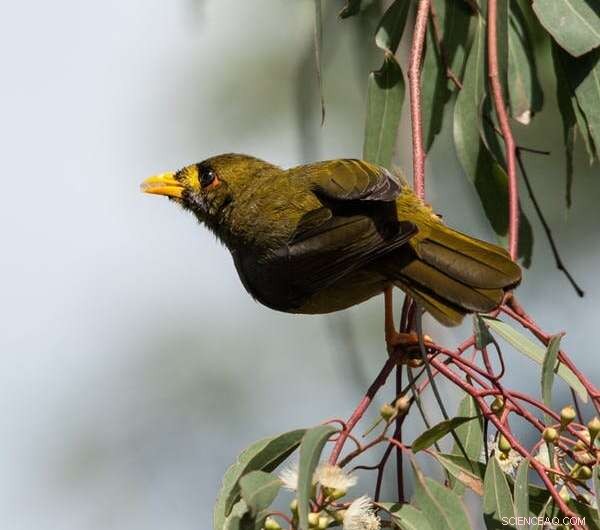
Crédito:Kaspar Delhey, proporcionado por el autor
Un misterio que muchos biólogos quieren resolver es cómo se desarrolla la complejidad en la naturaleza. Y entre los muchos sistemas sociales del mundo natural, las sociedades multinivel se destacan por su complejidad. Los individuos primero se organizan en familias, que son miembros de bandas, que se organizan en clanes.
En cada nivel, las asociaciones entre componentes (individuos, familias y clanes) son estructuradas y estables. En otras palabras, los individuos dentro de las familias generalmente permanecen juntos y las familias generalmente interactúan con otras familias específicas de una manera predecible para formar clanes estables.
Tal organización social probablemente ha caracterizado gran parte de la evolución humana (y todavía es común entre muchas sociedades de cazadores-recolectores de todo el mundo).
De hecho, las sociedades multinivel probablemente desempeñaron un papel fundamental en la historia humana, al acelerar nuestra evolución cultural. Organizarse en distintos grupos sociales habría reducido la transmisión de culturas y permitido la coexistencia de múltiples tradiciones.
En nuestra investigación, publicada hoy en Ecology Letters, estudiamos los comportamientos sociales en una población salvaje de soberbios reyezuelos. Descubrimos que estas aves también se organizan en sociedades multinivel, un nivel de complejidad que alguna vez se pensó que era exclusivo de los mamíferos de cerebro grande.
Cría cooperativa de aves
Aunque tenemos ideas sobre las ventajas de las sociedades multinivel, sabemos relativamente poco sobre cómo y por qué se forman en primer lugar.

Los soberbios reyezuelos masculinos se destacan por su plumaje de reproducción azul brillante.
De las pocas especies que se sabe que viven en sociedades multinivel, hay una característica compartida por todas. Es decir, viven en grupos estables, en ambientes donde la disponibilidad de alimentos es inconsistente y difícil de predecir.
Esto también es cierto para muchas aves que se reproducen en forma cooperativa, incluido el soberbio reyezuelo, familiar en los parques y jardines del sureste de Australia. Se reproducen en pequeños grupos familiares, con ayudantes no reproductores que ayudan a una pareja reproductora dominante. Y este sistema social es común entre las especies de aves australianas.
The superb fairy-wren is a well-studied species and is beloved by Australians, even being crowned bird of the year in this year's Guardian/BirdLife Australia poll.
These birds are notorious for their polyamorous approach to sex, despite being socially monogamous. Breeding pairs form exclusive social bonds, yet each partner will still mate with other individuals.
Our work now reveals this complex arrangement during the breeding season is just the tip of the iceberg.
Associating by choice
We tracked almost 200 birds over two years, by attaching different-colored leg bands to each individual. We recorded the birds' social associations and, from our observations, built a complex social network that let us determine the strength of each relationship.

Striated thornbills form larger flocks outside of breeding season. Credit:Kaspar Delhey
We found that during the autumn and winter months, some breeding groups – (which include the breeding pair, one or more helpers and last summer's offspring), stably associated with other breeding groups to form supergroups. And this was usually done with individuals they were genetically related with.
In turn, these supergroups associated with other supergroups and breeding groups on a daily basis, forming large communities. In the following spring, these communities split back into the original breeding groups inhabiting well-defined territories—only to join again next winter.
Just like humans, these little birds don't associate with each other randomly during the long winter months. They have specific individuals and/or groups they choose to be with (but we're currently not sure how they make this choice).
While it's not yet clear why superb fairy-wrens form upper social units (supergroups and communities), we suspect this might allow individuals to exploit larger areas during winter, when food is scarce. It would also provide additional safety against predators, such as hawks and kookaburras.
This theory is supported by our literature study, which shows that multilevel societies are likely common among other Australian cooperatively breeding birds, such as the noisy and bell miners and striated thornbills.
Cooperative breeding is another strategy to deal with harsh condition such as food scarcity. So the conditions that favor cooperative breeding are the same as those that favor multilevel societies.

The bell miner is endemic to south-eastern Australia. Credit:Kaspar Delhey
Multilevel societies in other animals
There are several other species which seem to have a similar social organization. They include primates such as baboons, and other large mammals that exhibit rich animal cultures, such as killer whales, sperm whales and elephants.
For a long time, researchers thought living in complex societies might be how humans evolved large brains. They also thought this characteristic may be exclusive to mammals with large brains, since keeping track of many different social relationships is not easy (or so the reasoning went).
Consequently, other animals with whom we are less closely related have mostly been excluded from this field of investigation.
This might reflect a bias that we, humans, have towards our own species and species which are similar to us.
As it turns, you don't need to be a mammal with a big brain to evolve complex multilevel societies. Even small-brained birds such as the tiny superb fairy-wren can do this—as well as the vulturine guineafowl a chicken-like bird from northeast Africa.
We strongly suspect quite a few birds will join their ranks in the coming years as more research is done.